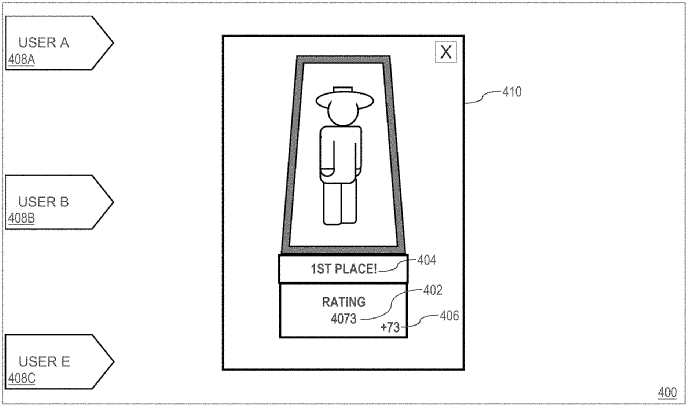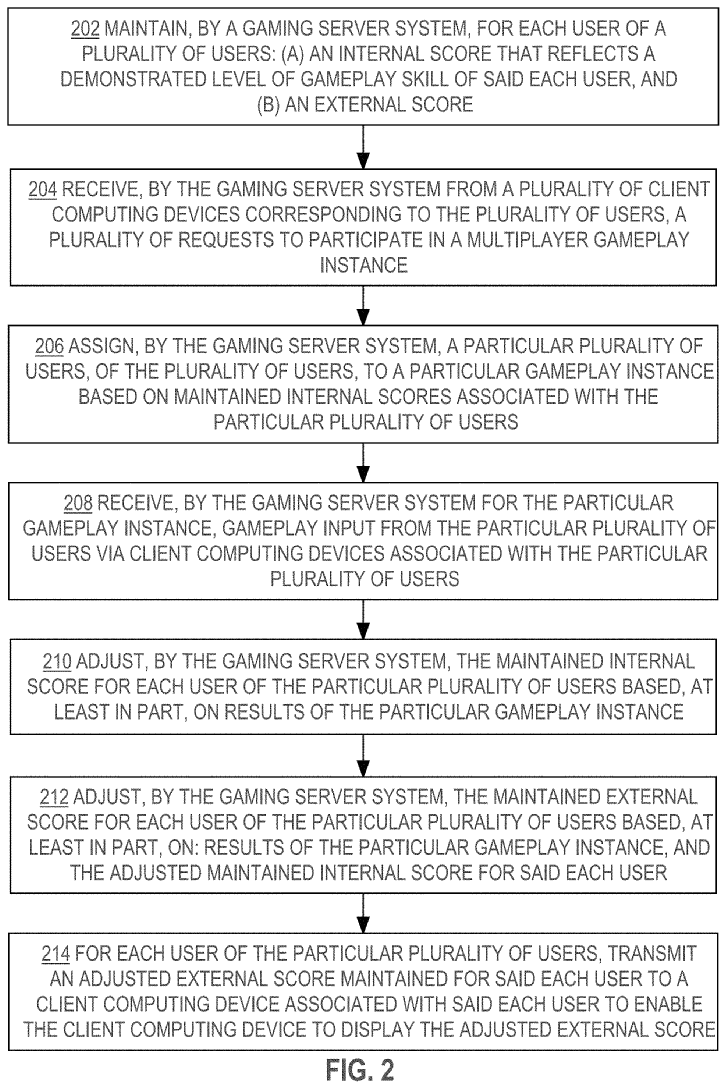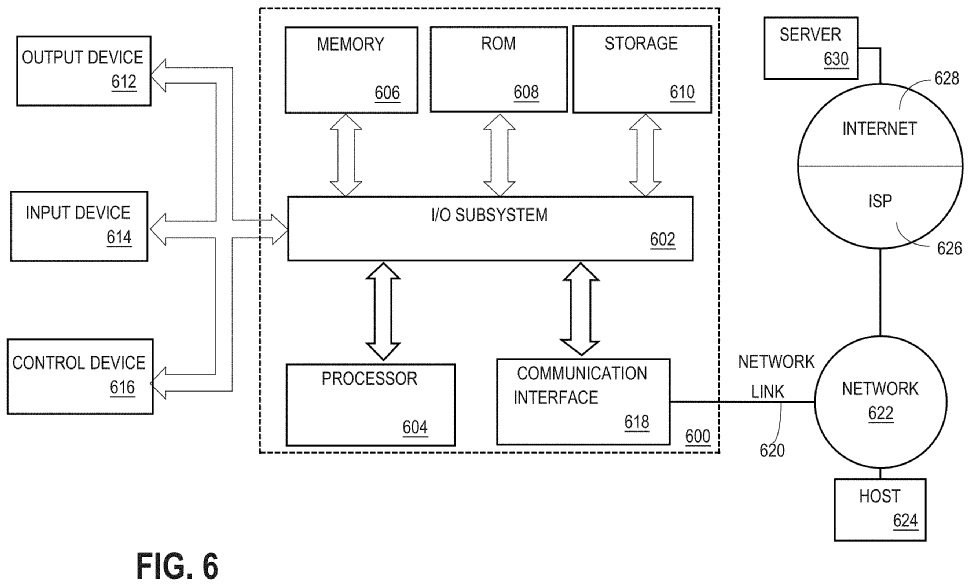
Game designers use many ways to record user rankings by calculating the overall player score in multiplayer games. The score is used to put a user against others of similar rank to allow equal match among them. This ensures that newbies end up battling newbies while pros only have to go against players of the same level.
However, the current imposed systems to compute user rankings are also full of flaws and demerits that can lead to a frustrating experience for both developers and end users. We have bumped into a new patent published by Blizzard that seeks to fix the dilemma by introducing a whole new approach to computing in-game user rankings.
Blizzard’s patent named “TECHNIQUES FOR USER RANKINGS WITHIN GAMING SYSTEMS” preludes a new scoring system by using two separate “internal” and “external” scores. The proposed method will combat issues like score or “gameplay stagnation” while also allowing a more flexible way of pitting users against each other.
Major Takeaway
- Blizzard has published a new patent that discusses computing user rankings by dividing the score into internal and external scores.
- The internal score will mirror the skills of a user, and will continually increase without resetting in future seasons.
- The external score will be utilized to solve the gameplay or score stagnation problem. It will be reset periodically and used for different purposes alongside the internal score. It will give players a feeling of progression.
- We could see the patent materialize in the existing and future Blizzard games like Overwatch 2 and Call of Duty IPs. It will tackle prevalent matchmaking issues while ensuring a high-quality competitive multiplayer experience.
A time comes when a player ends up knowing all the skills a game has to offer, and the user score tends to stagnate at that point for all the users. This creates issues, and if the user scores do not reflect their skills, then it can create uneven matches among players of different hierarchies. The patent seeks to combat these problems.
Thus, the patent ultimately divides the ranking system into internal and external scores to calculate user rankings. The internal scores are “designed to accurately reflect the current skill level of a user.” In other words, the internal scores are created to judge skill-based aspects of gameplay for the users.

The proposed system will derive the internal score “based on that player’s gameplay results gathered over an extended time period (e.g., spanning many gaming “seasons”).” Moreover, since the internal scores will reportedly not reset at the start of new seasons, players of similar skill levels can keep playing normally.
Blizzard can use the internal scores in many ways, such as “assigning users to multiplayer gameplay instances (e.g., matching similar-skill-level users with each other) or providing challenges within the gameplay that are appropriate for the user’s skill level.”
The internal score is susceptible to the aforesaid gameplay stagnation problem, and Blizzard tackles that with the second external scoring system. Since these scores do not reflect user skills, they can be adjusted in many ways, such as basing external scores on gameplay results and other factors.
The external scores can periodically reset, at the start of each season, for instance, to deal with issues like gameplay stagnation.
For example, the external scores can be reset back to 0 each season so that players can get a sense of progression. Initially, it will be useless for rookies and pros, but eventually, the external scores will grow steadily to reflect the internal scores as players partake in gameplay.
Blizzard also discusses a progression factor; the external score gain will differ based on player skills. For pros, the external scores could be updated slowly, while newbies grow fast with each round. However, more skills will result in an average net faster progression.
The patent elaborates, “users with high skill levels are able to raise their external scores to be similar to their internal scores more quickly than would otherwise be required without application of a progression factor, requiring less gameplay overall and fewer computing resources.”

The patent also argues updating external scores indefinitely based on gameplay instead of resetting but mostly sticks to examples with the first case scenario where external scores act like seasonal scores.
Blizzard’s newly proposed scoring techniques can prevent unfair gameplay where a user creates a “puppet account” to accumulate wins for their main account. This is a prevalent issue with current matchmaking systems used in multiplayer games.
For instance, the puppet account drastically reduces the average internal score of a team; one of the proposed solutions will use the highest internal scores from a team member to create matches by comparing with the other team’s highest internal score player.
Blizzard’s new scoring system can be used for more than just matchmaking as well. The gameplay experience can be changed for players of various internal scores to match their skill level. Examples include, “non-player characters (NPCs), puzzle challenges, available tools or other resources, etc.”
One instance includes adapting the difficulty of a puzzle for each player according to their internal scores. The users with lower internal scores can “participate in easier puzzle challenges or in types or instances of puzzle challenges that require less knowledge of gameplay nuances, rules, strategy, and/or culture.”
Even the behavior or skin of an NPC can be changed based on the internal score of the player. For an illustration, an NPC may appear as a barmaid character to a rookie, or the NPC may appear as a rogue class character for a pro, as described in the patent.
Furthermore, a player with lower internal scores may also be provided with a detailed set of instructions for a quest, while a pro may be given a different set of information depending on the score.
It is worth noting that the patent mentions implementing the new scoring techniques in both multiplayer and single-player games. As per the patent, single-player games could use the non-matchmaking elements discussed above.

The current titles often struggle to deliver a fluid gameplay experience for players of different skill levels. We have seen many popular AAA-scaled games fall flat in providing a fair matchmaking system, but this patent could change that entirely by innovating the current scoring techniques employed by developers.
The titles may even offer more in-depth gameplay due to allowing for more flexibility during matchmaking. Better restriction and the ability to match with players that almost mirror your skills will also deliver an overall more competitive in-game experience for users of all rankings.
The newly published scoring system could completely alter the current popular and upcoming AAA multiplayer titles as we know them.
We could soon see Blizzard Entertainment’s games use the proposed method in the coming years. Titles like Overwatch 2, Call of Duty, and its many fantasy-based IPs could see the integration of the new scoring system. However, we suggest taking the news with a slight grain of salt, as the patent may never be realized in the future.
What are your thoughts about Blizzard patenting to calculate user scores based on the new internal and external scoring system? Do you think it is a definite improvement over the currently used scoring method by major AAA titles? Do let us know your opinions in the comments below.
Similar Reads: Ukrainian Developer Of The S.T.A.L.K.E.R. Series Dies Fighting Russians.
Thanks! Do share your feedback with us. ⚡
How can we make this post better? Your help would be appreciated. ✍



